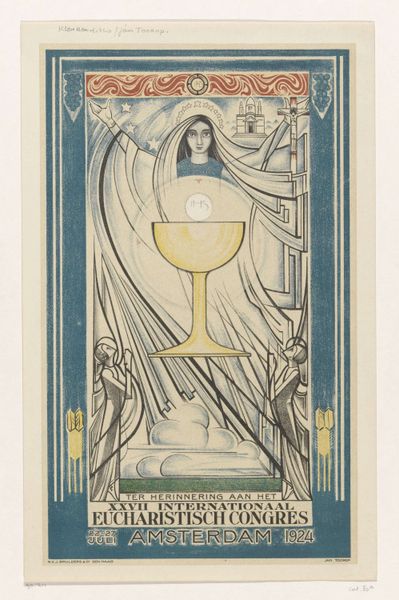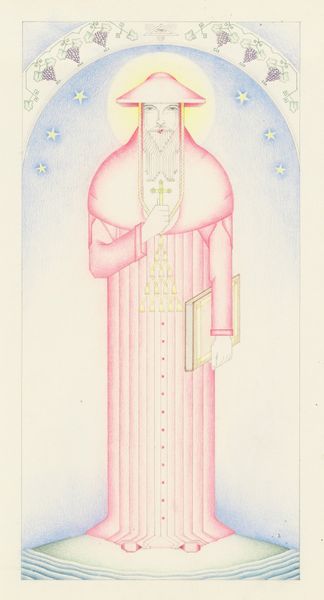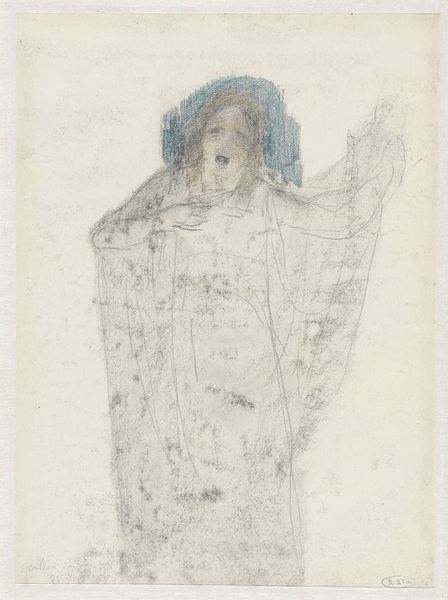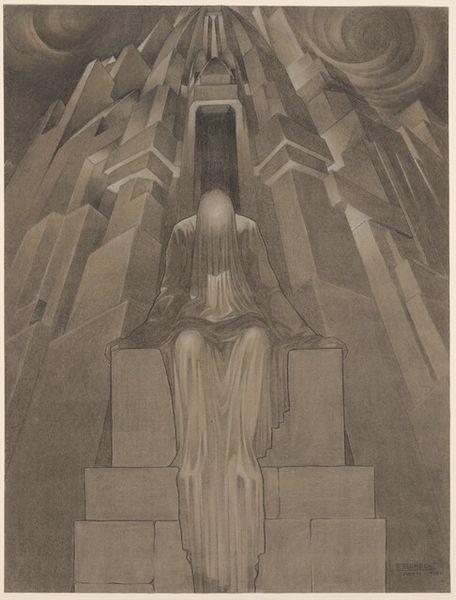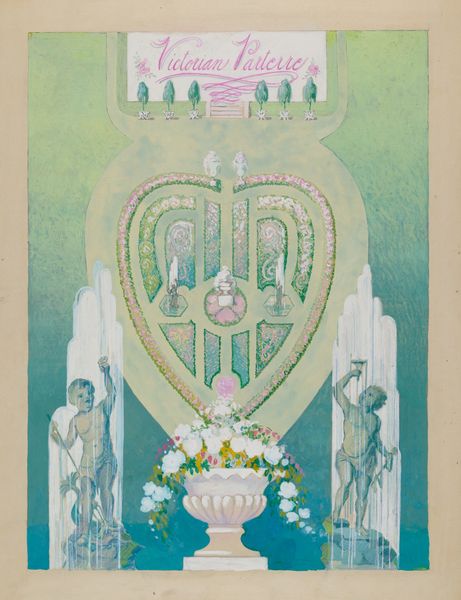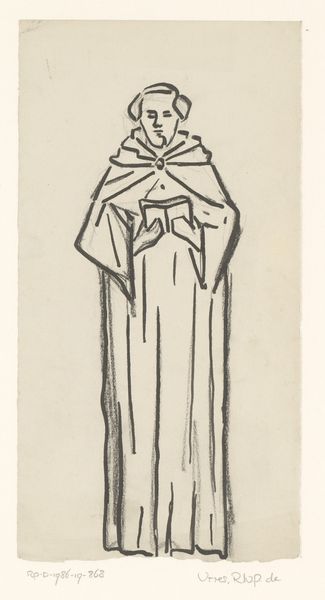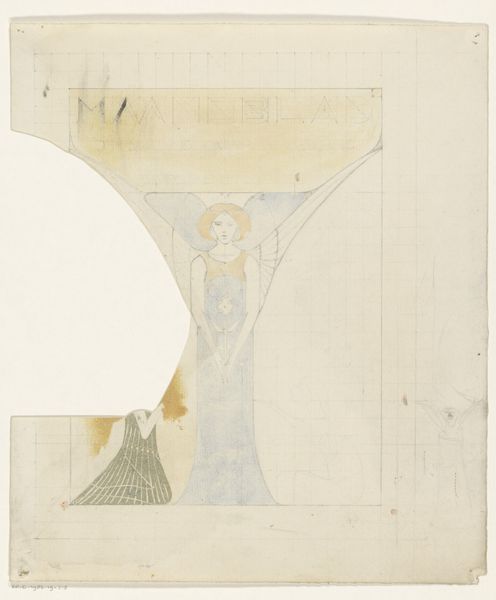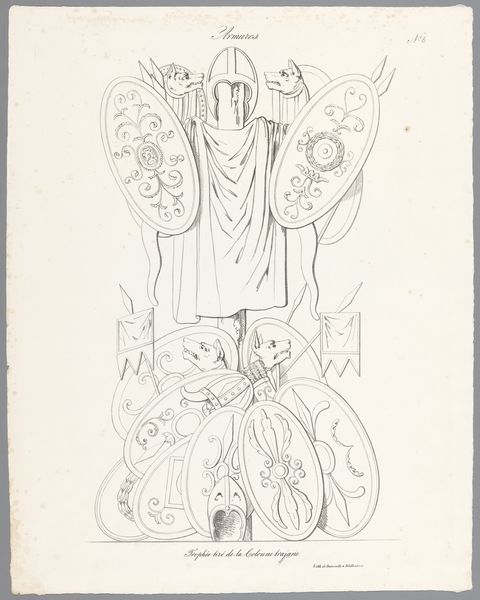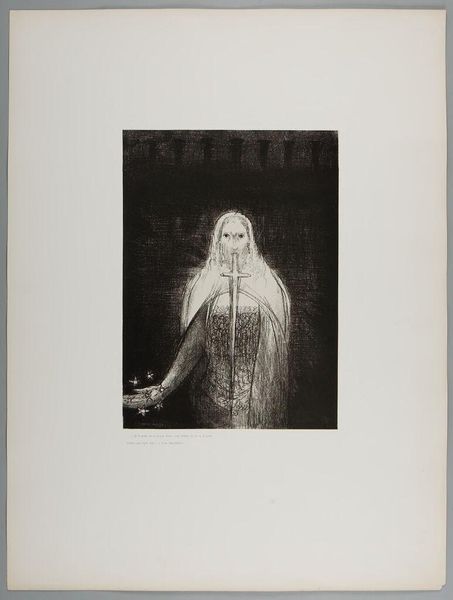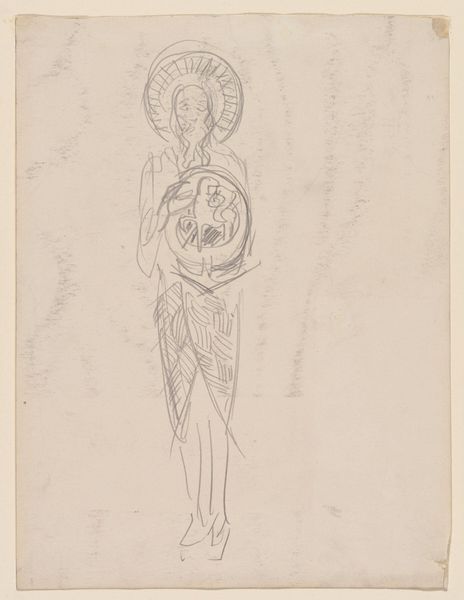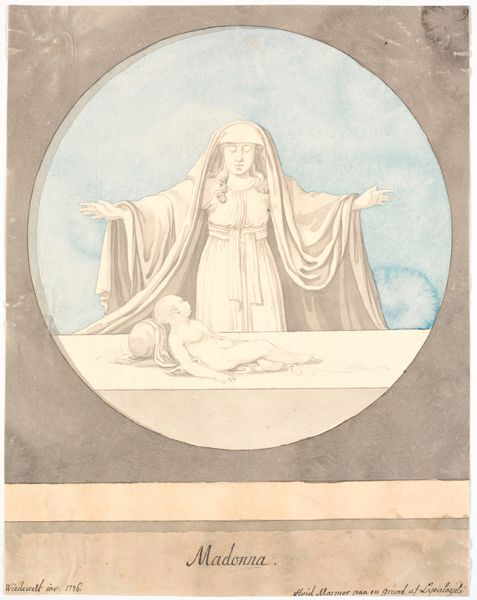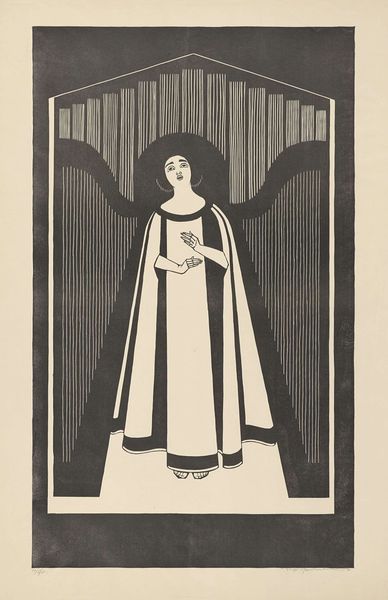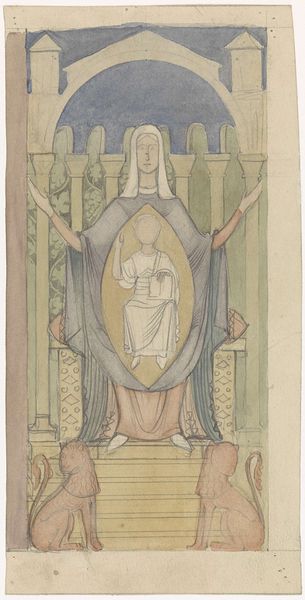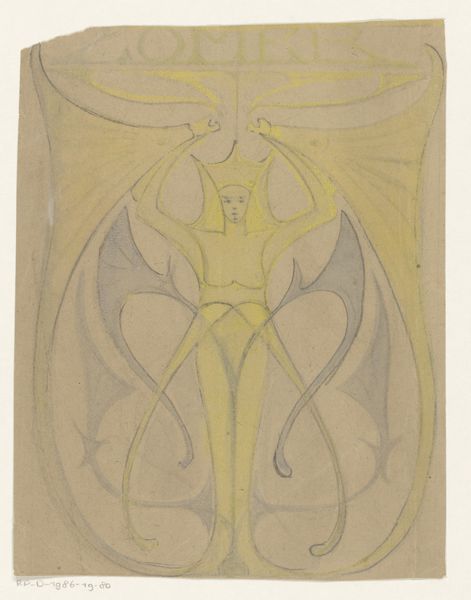
drawing, coloured-pencil
#
portrait
#
drawing
#
coloured-pencil
#
coloured pencil
#
academic-art
Dimensions: overall: 35.6 x 27.8 cm (14 x 10 15/16 in.)
Copyright: National Gallery of Art: CC0 1.0
Curator: Welcome. Today we're examining an intriguing portrait, "Santa Clara de Asis," likely rendered between 1935 and 1942. The piece employs colored pencil on what appears to be wove paper, offering a surprisingly delicate touch for such a solemn subject. Editor: There is a certain quietness evoked upon first encounter—almost an unsettling stillness that suggests something significant lies beneath the surface. The limited palette contributes to a kind of ethereal quality that captivates the attention. Curator: Indeed. Observe how the anonymous artist utilizes vertical lines to construct Santa Clara’s figure, imbuing her form with both strength and serenity. Note also the balanced asymmetry in the adornments. Stars versus vine clusters above her head; earth below and sky above, as compositional strategy. Editor: Right, I would only like to underscore how, although rooted in a historical and religious context, this piece opens a discourse about societal expectations of female religious figures—who are expected to maintain stoicism and inner peace even amid structural oppressions or social turmoil. Her gaze avoids engaging us directly. What does that choice reveal, about gender, faith, and visual rhetoric in art history? Curator: Her disinterest with you would suggest the unworthiness of your engagement. I agree it’s thought-provoking, yet it may speak more to the aesthetic priorities of Academic art rather than directly addressing a specific socio-political climate of women at that moment in time. Consider the almost clinical way light and shadow sculpt the robes—an attempt to reach for near perfect visual forms! Editor: Still, by utilizing familiar and expected iconographic symbols this representation reinforces power structures that define not just who Santa Clara was as a religious figure, but rather what an idealized woman of faith should emulate. What sort of model for women is constructed? What social behaviors does that expectation cultivate or ignore? Curator: The cool color temperatures are contrasted cleverly with a singular use of strong saturated yellow tones that draw your eyes immediately to the symbolic center of the piece. Without question, these carefully managed design qualities establish a clear visual hierarchy to follow. Editor: A hierarchy designed for whom? Which historical and societal power dynamics benefit most when women willingly position themselves within these specific structures of influence? These types of inquiries require more discussion about the broader politics of visuality itself. Curator: A rewarding perspective, even as it risks moving our focus away from the artwork’s very formal achievements as an image… Regardless, "Santa Clara de Asis" proves to be richer in design than one might at first expect. Editor: Absolutely. Its visual nuances urge a larger discussion that can only promote much more meaningful insights.
Comments
No comments
Be the first to comment and join the conversation on the ultimate creative platform.
